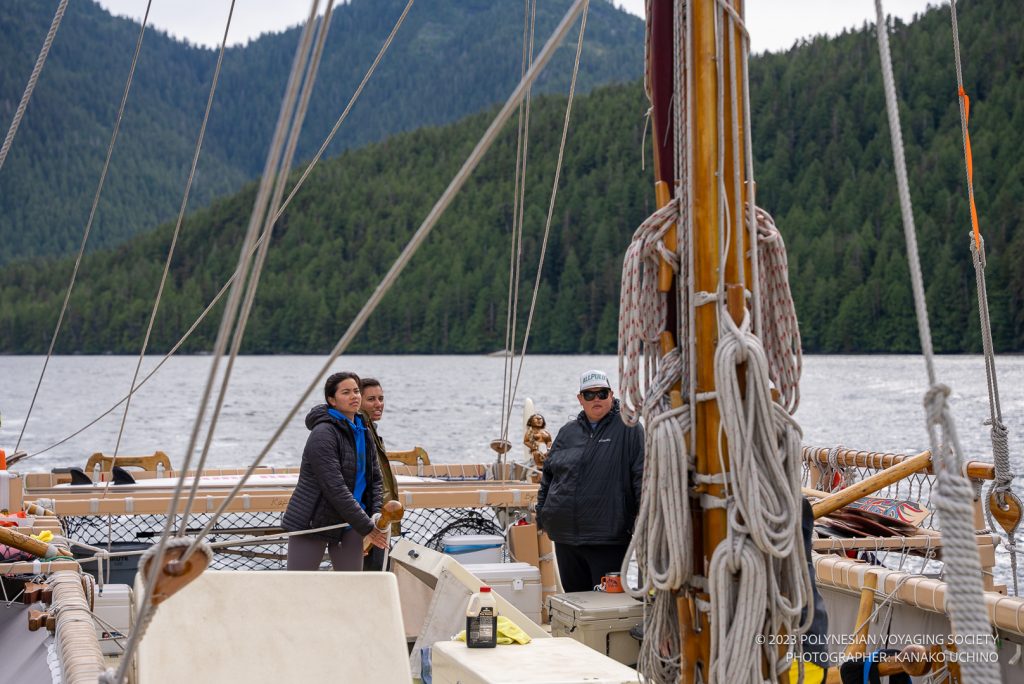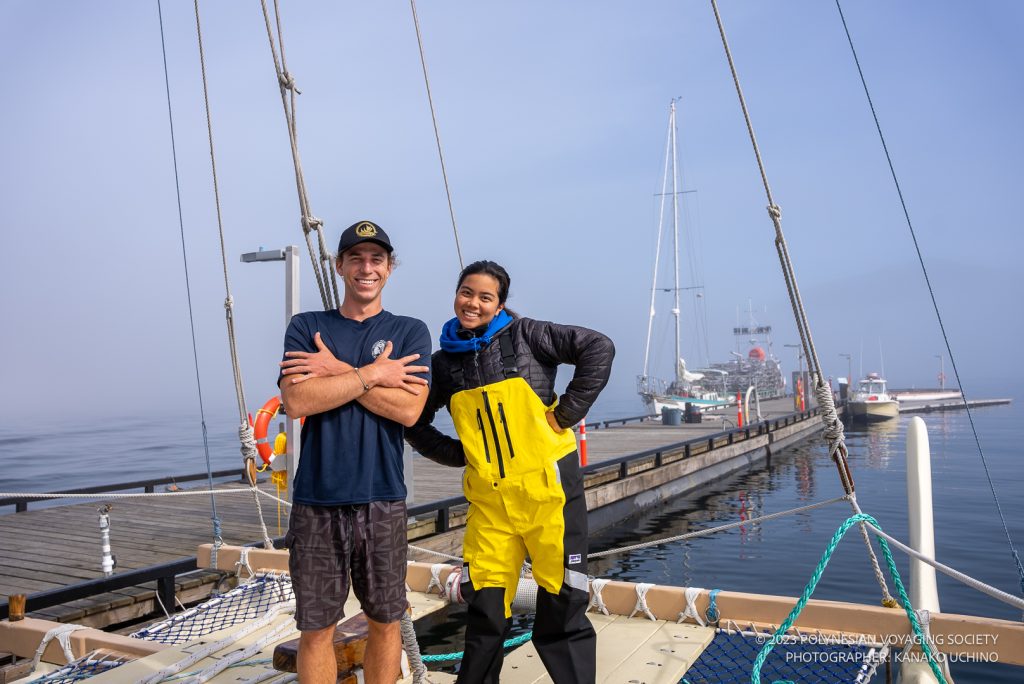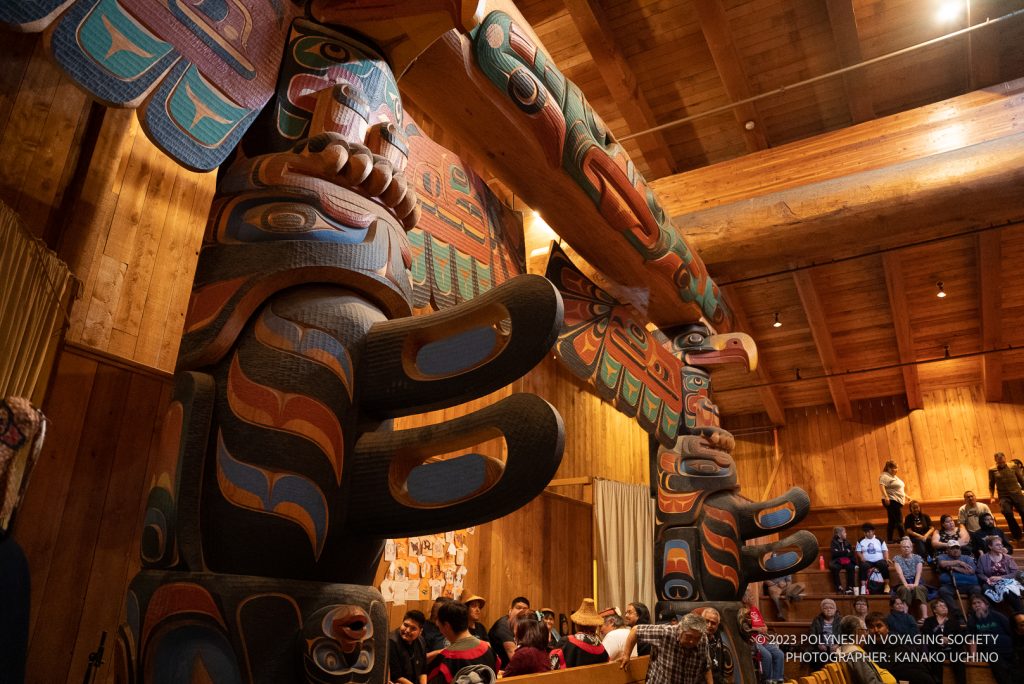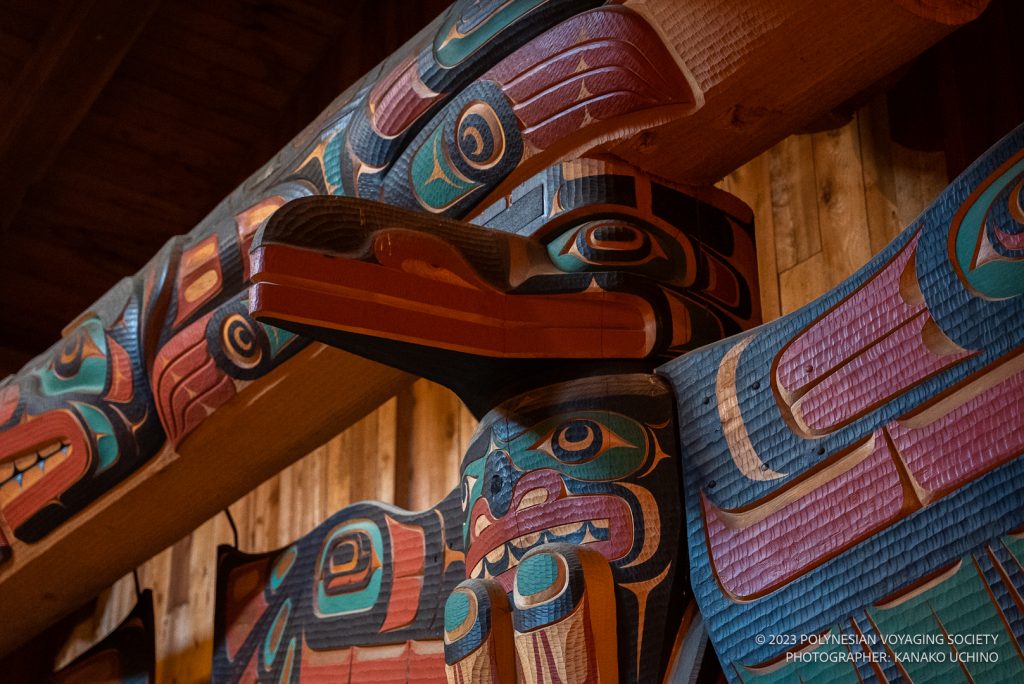Hōkūleʻa makes 4 additional stops in British Columbia

Since departing Prince Rupert last week, Hōkūleʻa and her crew have been sailing and making stops in British Columbia including Hartley Bay, Klemtu, Bella Bella and now Hakai where the canoe arrived July 26.
The crew has been learning about the people and values of each of these places, making strong, rich connections despite the short stays. The voyagers are also learning how to sail through new waters and in weather very different from Hawaiʻi.
On July 20, departure from Prince Rupert for Hartley Bay was delayed by a few hours due to dense fog. Once the crew observed the weather clearing, they departed and entered the Grenville Channel paying close attention to floating obstacles in the water, especially as the fog continued to limit their visibility.
As the morning progressed, the sun began to shine through, dissipating the fog and making British Columbia’s lush green coastline and turquoise blue water visible again. The gusting wind added to the wide range of weather and ocean elements throughout their nearly 12-hour transit.
At approximately 9:30 p.m., Hōkūleʻa arrived at Hartley Bay where the crew was greeted by a small group of members from the Gitga’at community, population about 125, eager to welcome them to their lands.
“The success and smoothness of our journey to Hartley Bay is proof that one of the most important decisions that can be made related to voyaging is whether the time is right to go; based on history, experience, and naʻau,” said apprentice navigator Lucy Lee.
The crew spent two days in Hartley Bay where they were hosted by the community and spent time exchanging stories and dances with elders and “elders in training.” The crew also hosted tours of Hōkūleʻa.
On July 23, the canoe departed Hartley Bay for Klemtu, sailing through in weather ranging from heavy squalls, cold rain and lightning to bright sunshine. The constant change in weather has allowed the crew to strengthen their skills in managing the tow line when necessary, handling the steering sweep, and helping each other and the waʻa (canoe). They also saw what looked like small orcas but were in fact Dallʻs porpoises, endemic to the North Pacific and said to be the largest of porpoises.
As the canoe was about 20 miles from their destination, community boats came out to guide them and keep them company for the remainder of their trip into Klemtu.
“As the Klemtu boats appeared, so did the sunshine. Those on the vessels were dressed in their regalia and their smiles were warm and wide,” said Lee.
Once Hōkūleʻa arrived in port at Klemtu, the crew was greeted by the community of the Kitasoo/Xai’xais territory with drumming and songs then hosted to a dinner where they exchanged meaningful stories.
“While our stay in Klemtu was short, it was an evening that filled each of our ʻumeke and allowed us to have a moment of silence with each other and ourselves as we continue through this huakaʻi,” Lee added.
Just one day later, on July 24, Hōkūleʻa and crew departed Klemtu for Bella Bella. This transit proved a good lesson in planning as it required about 13 miles of sailing through an area exposed to the open ocean, rather than the protected inland passage. Timing is indeed everything as the crew reported smooth sailing, as they arrived several hours later in the Heiltsuk village on the east coast of Campbell Island, British Columbia.
In Bella Bella, population approx. 1,100, though rainy much of the time, the crew received a warm welcome in the Big House, which opened in 2019 and was this communityʻs first Big House in 120 years, after the government banned them as well as potlatches (a traditional ceremonial feast) that were held in them. That ban was lifted in 1951, but it took decades to raise funds and more than a year to build with local cedar logs. The crew felt fortunate to be able to experience the Heiltsuk hospitality, song, dance and wisdom in this special gathering place.
On July 26, canoe and crew departed Bella Bella and sailed 30 miles south to Hakai, on the northwest end of Calvert Island, B.C., a place known for its stunning natural beauty. It is a hot bed of ocean science and innovation, and much of that is thanks to the Hakai Institute, which welcomed Hōkūleʻa to its dock. Though a short stay of one or two days, the crew looks forward to exploring this area and learning from the scientists and researchers doing important work for this area and ultimately for our island earth.
Hōkūleʻaʻs next leg to Port Hardy will again require sailing in waters exposed to the open ocean, but for a longer period, so departure must be well-timed in consideration of weather, currents, tides, winds and waves. Departure depends on those conditions.
For the latest updates and to track the Moananuiākea Voyage, visit hokulea.com.

























